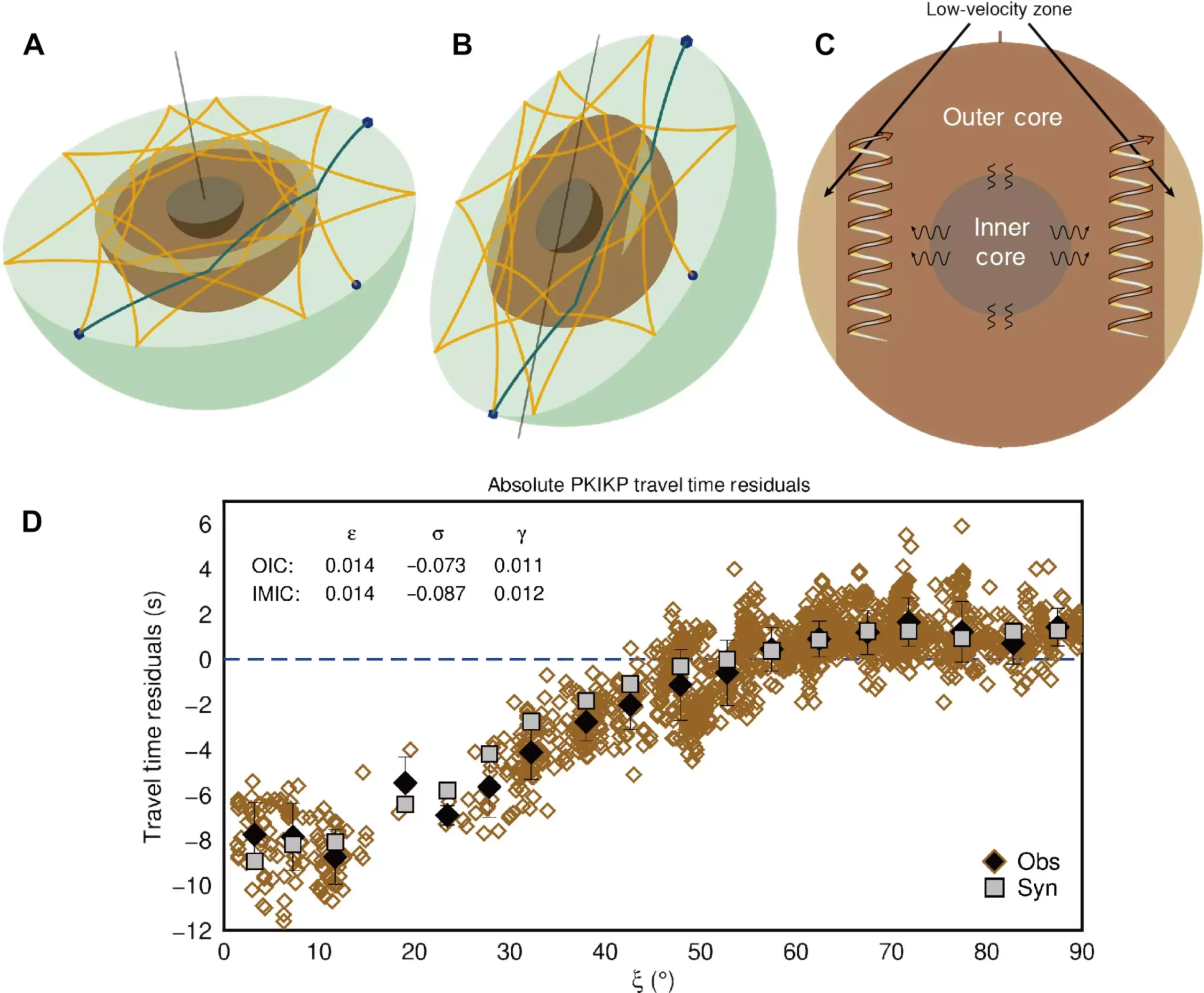Scientists from The Australian National University (ANU) have recently made an intriguing discovery deep within Earth’s liquid core. This doughnut-shaped region, located at low latitudes and parallel to the equator, has remained hidden until now. The structure, found at the top of the outer core where it meets the mantle, offers new insights into the dynamics of Earth’s magnetic field.
The seismic waves detected by ANU seismologists in this newly discovered region exhibit slower speeds compared to the rest of the liquid outer core. By analyzing the similarities between waveforms many hours after earthquake events, the researchers were able to uncover this unique doughnut-shaped structure. This approach, different from traditional seismic wave observation techniques, provided a deeper understanding of the paths of waves and their travel times through the Earth.
Dr. Xiaolong Ma, a study co-author, highlighted that the discovery sheds light on some of the mysteries surrounding the dynamics of Earth’s magnetic field. The outer core, primarily composed of liquid iron and nickel, plays a crucial role in generating Earth’s magnetic field. Understanding the composition of the outer core, including the presence of light chemical elements, is essential for predicting changes in the magnetic field and its impact on life on Earth.
Professor Hrvoje Tkalčić, another co-author of the study, emphasized the importance of this discovery. The low velocity within the liquid core suggests a high concentration of light chemical elements in the region, influencing the speed of seismic waves. These elements, combined with temperature differences, contribute to the movement of liquid in the outer core, ultimately shaping Earth’s magnetic field. This fundamental ingredient is critical for sustaining life on our planet.
Despite the significant findings, there are still unanswered questions about Earth’s outer core that require multidisciplinary efforts from different fields of study. Collaboration between seismologists, mineral physicists, geomagnetists, and geodynamicists is essential to further unravel the secrets of Earth’s core and magnetic field. Continued research in this area will not only enhance our understanding of the planet but also aid in predicting potential changes in the magnetic field.
The discovery of the doughnut-shaped region within Earth’s liquid core marks a significant advancement in our understanding of the planet’s magnetic field dynamics. The findings from the ANU study have opened up new avenues for exploration and research into the composition and behavior of Earth’s outer core. By delving deeper into the mysteries of our planet’s core, scientists can gain valuable insights that may have far-reaching implications for life on Earth.

